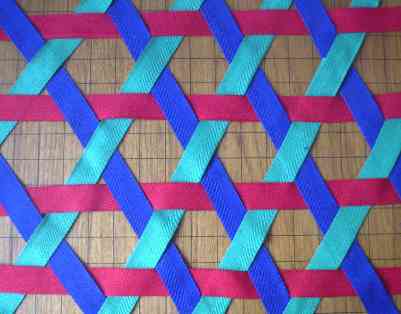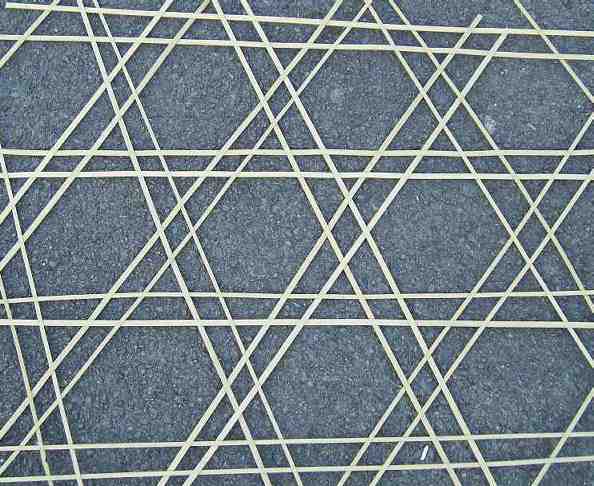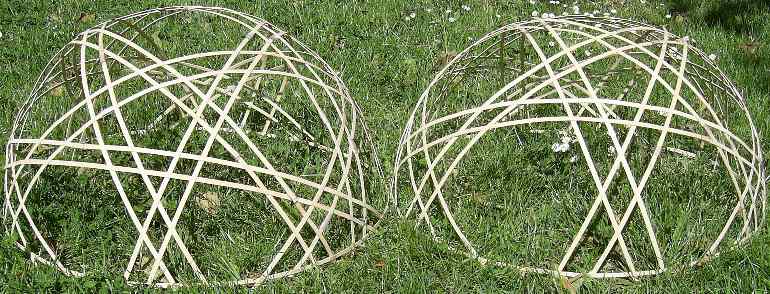
Triaxial Weaving
Double triaxial weaving
After thinking about building a triaxial weave dome out of metal,
I wondered what could be done to reduce the instability of such
fabrics - if the material used was flexible at the nodes.
It occurred to me that having a greater fraction of the fabric
covered with triangles and quadrilaterals might help.
That idea led me to the following new fabric:

Double Triaxial Weaving
While this fabric does have a larger proportion of
its surface covered by triangles and rhombi, the difference
is relatively slight.
There are some substantial negative points - in particular,
the hexagonal "holes" in the fabric are larger - and the
longest distance individual struts have to span before
reaching another strut is larger.
Nontheless, this appears to be a new weave, it is of a
pretty basic and fundamental character - and may prove to
have some applications.

Twin domes
Here are a couple of woven domes I constructed to illustrate
the layout.
Tim Tyler |
Contact |
http://hexdome.com/
|